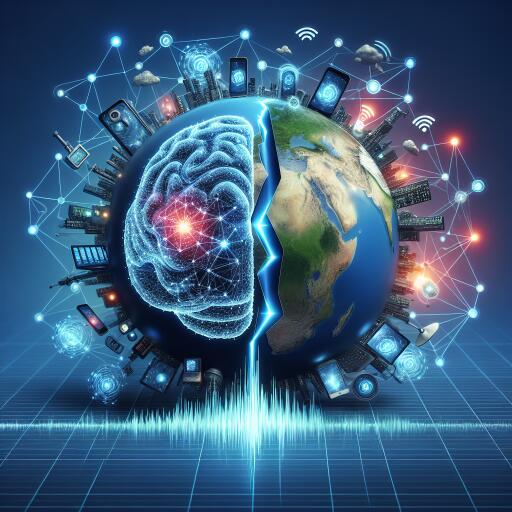AI and IoT Transform Earthquake Prediction Methods
Earthquakes, with their unpredictable nature and potential for massive destruction, have long presented a formidable challenge to scientists. Traditional methods of predicting earthquakes have struggled to provide timely, accurate warnings. However, the landscape of seismic prediction is experiencing a monumental shift thanks to the advent of Artificial Intelligence (AI) and the Internet of Things (IoT). These technological advancements are fostering new hope for more effective earthquake prediction methods.
The Promise of AI in Earthquake Prediction
One of the most significant breakthroughs in the realm of earthquake prediction comes from the utilization of AI. Scientists from around the globe are deploying AI to sift through enormous datasets encompassing seismic activity, meteorological conditions, and patterns of ground movement. By applying machine learning algorithms, researchers are striving to discern complex patterns that could signal impending earthquakes. This AI-driven approach to studying past seismic events is unveiling patterns that could serve as predictors for future quakes, enhancing the accuracy of earthquake forecasts.
IoT: A Catalyst for Early Warning Systems
Parallel to the advancements in AI, the integration of IoT technology is revolutionizing the way we monitor seismic activity. Innovators are leveraging IoT devices and cloud computing to forge extensive earthquake monitoring frameworks. The deployment of IoT sensors across various regions generates real-time data that, when combined with AI analysis, can yield more precise earthquake predictions. This sophisticated amalgamation of technology empowers early warning systems to provide timely alerts, enabling individuals and communities to undertake necessary precautions well before disaster strikes.
In a notable collaborative effort, scientists from China and Pakistan are at the forefront of developing an Early Warning System (EWS) by harnessing data from earthquake-prone regions. This initiative exemplifies the potential for international cooperation in mitigating the risks associated with earthquakes.
Innovations from Egypt: Rapid Earthquake Intensity Determination
A remarkable innovation comes from Egyptian scientists who have introduced a rapid earthquake intensity determination model named 2 S-ML-EIOS. This model has the capability to assess the severity of an earthquake within a staggering two seconds of its occurrence. Such a rapid assessment is pivotal for the effectiveness of early warning systems. When integrated into centralized IoT frameworks, the 2 S-ML-EIOS model can swiftly relay alerts to authorities, thereby facilitating immediate and potentially life-saving response measures.
The Future of Earthquake Prediction
The convergence of AI and IoT technologies is heralding a new era in earthquake prediction. By enabling the analysis of vast datasets and providing real-time monitoring capabilities, these technologies are opening new avenues for early detection and warning. While challenges remain in predicting the exact time and location of earthquakes, the progress made thus far provides a solid foundation for optimism. As researchers continue to refine these technologies and as global collaboration strengthens, the potential to save lives and minimize damage from earthquakes improves significantly.
In conclusion, the fusion of AI and IoT is not just transforming the way we approach earthquake prediction; it is also redefining the boundaries of what is possible in natural disaster preparedness. As these technologies continue to evolve and their integration deepens, the hope for a future where the devastating impact of earthquakes can be significantly mitigated grows stronger.










